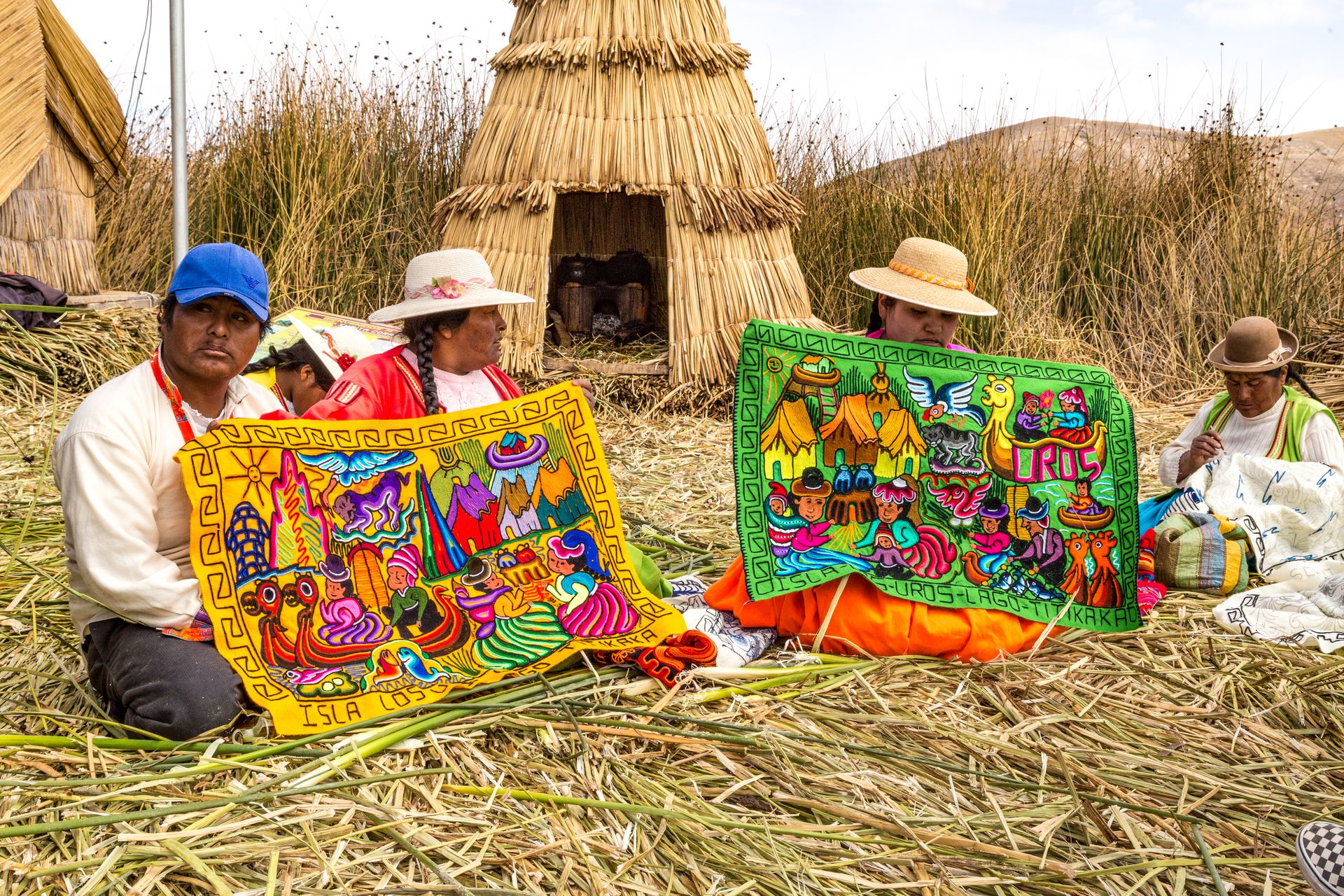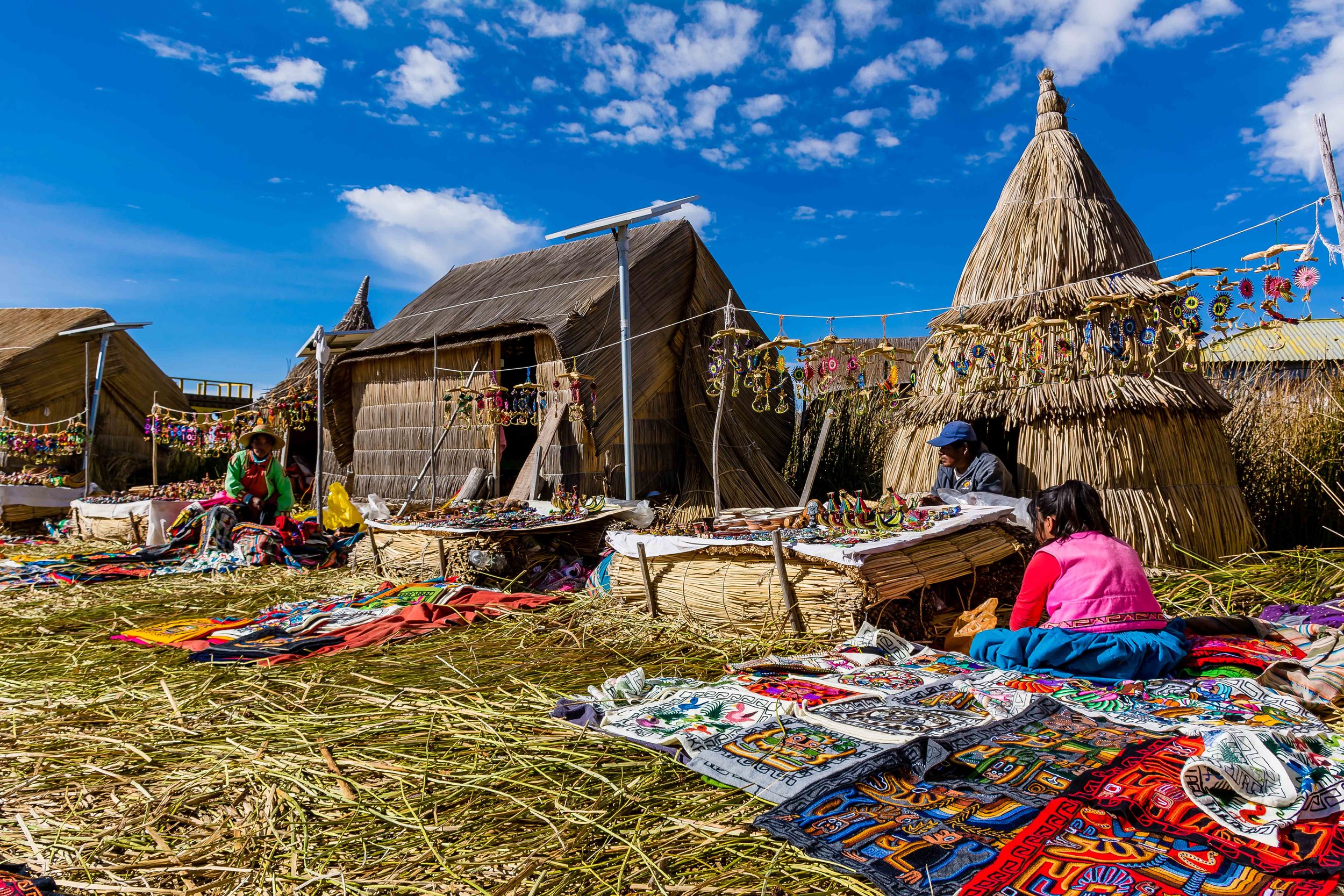Titicaca lake and its islands: the second chakra of the Earth

Lake Titicaca is fanned by mysteries and secrets. Researchers say that according to found finds, we can conclude that there used to be a sea here before. That is how Titicaca appeared, nowadays ocean animals and fish live in here, decrease and rise in the Andes is an open question. Assumptions are so unimaginable that, believing in them, would have to redraw the whole of science.
For Peruvians, the lake is considered sacred because according to legend, it was the brother and sister, the children of the god Inti, who came out to fulfill the will of their father: to form a city in a place where they can stick the gods-given rod and start a great civilization. This city was the famous Cusco - the political center of the ancient and wise Incas who ruled almost the entire continent until the middle of the 16th century. Whether it was or not, but the architectural objects found here do not add clarity but rather make you believe in the unreal. For example, huge stone blocks in Tiwanaku (on the territory of Bolivia), which could be built either by huge warriors or ordinary people, but with the help of high-tech equipment and heavy lifting machines. Who erected them, and where did the secret of construction go? Locals only joke off when they hear this question, and tell the legend, similar to the story of the end of the world. Photo traveltoenlightenment.com
Photo traveltoenlightenment.com
Read also: Sacred animals of the Incas
The island of the Sun in Titicaca (Bolivia’s side), where the founders of the Incan Empire Manco Kapan and Mama Okllo, the shamans and spiritual mentors of South America came from, is considered the second chakra of the Earth, which corresponds to the sexually creative human chakra. Its range covers an average of 777 miles, including the Andes and Machu Picchu. The center of the chakra is Titicaca stone, and in general - almost all the surroundings of the lake are fanned by legends and mysticism. Photo talesfromthelens.com
Photo talesfromthelens.com
Among the sights and monuments of architecture a special place is occupied by the wall of Aram Moore (Gate of the Gods), located near the city of Puno in the steppe. This is a gigantic stone rock of bright brown color with carved recesses in the stone, resembling a three-section gate. Peruvians believe that this is a portal to the transition to parallel dimensions. All tourists will surely be told the story of how once a whole folk ensemble disappeared in this place on a national holiday, and now at night people can hear his plaintive songs.
Read also: What do they eat: Peru
Having been there, it's time to catch a boat and go on a journey on the lake itself and its islands, of which there are more than 40. Some of them belong to Peru, some - to Bolivia, and many of them are inhabited by people. This walk is sure to be remembered for a lifetime because even without a portal it will take you to another world.
The Uros Islands surprise us with their texture - floating areas made of reed abundantly growing here. The local people are trying to preserve the tradition of creating islands, which originated at a time when the Indians were in danger, and they, fleeing from the villages, preferred to settle on floating islands. Communities live here, each island has its own president, who, if necessary, acts as a guide and shows the principle of creating an island on mock-ups, as well as how life is organized. They live a normal life here: they work (they do more housework and weave souvenirs), give birth and raise children, send them to school by boat to a neighboring island or to the city of Puno, fish and engage in barter. Photo albertorossiniphoto.com
Photo albertorossiniphoto.com
Read also: Chan Chan. Peru city from clay
Amantani, the island which is well-known all over Peru, with an area of just over 9 square kilometers is a very popular place among tourists. There is no centralized power supply, there is no transport, and the locals (about 800 families) do not even use bicycles: they simply cannot be driven here, because the whole island is in fact a mountain. Having landed on the pier, you will need to climb the mountain all the time to reach the ancient temples of the Pachamama and Pachatata Indians, located on the top of the island-mountain. It is believed that the desire to find the love of his life, made on this island, is surely fulfilled.
Also mandatory sightseeing during the walk is the island Takile, its area is less than 6 square kilometers. The main part of the village is located at an altitude of 3950 m. The locals climb there on their own two skilfully and without rest, but travelers will have to use it to sweat unaccustomed. Climbing up, you will forget about fatigue and reward yourself with a divine view of the lake. Photo nativepathstravel.com
Photo nativepathstravel.com
Read also: Nothing is lacking for comfort: Peru travel tips
In addition, Takile is very original and is included in the list of intangible cultural heritage of UNESCO thanks to the famous technique of fine knitting of wool. Moreover, knitting on five knitting needles are done exclusively by men, and women are engaged in weaving. There are no roads and no transport, no police (due to the absence of crime), as well as dogs or cats. Life interaction is built on the principle of the moral code established by the Incas and preserved until today: do not steal, do not lie and do not be lazy.
Read also: Peru. Places of power





















